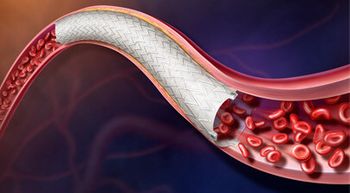
- Medical Economics December 2020
- Volume 97
- Issue 16
Frontiers in diabetes patient management
Innovative technology helps patients adhere to their treatment and stay safe during the COVID-19 pandemic.
Data has shown that diabetes increases a person’s susceptibility to severe COVID-19, making it especially important for those with diabetes to limit their potential exposure to the virus.
The COVID-19 health crisis has underscored the importance of having technology that helps medical professionals easily identify their patients with diabetes and verify their adherence with testing and office visits.
“When New York became a COVID-19 hotspot, our providers understood that if patients failed to monitor and manage their blood glucose levels, miss routine follow-up touch points, or otherwise not receive the care they needed, they could be at increased risk of not just long-term complications, such as heart and kidney disease and vision and nerve problems, but short-term, potentially life-threating issues such as severe low blood glucose levels or diabetic ketoacidosis,” says Jill Brodsky, M.D., FAAP, associate medical director, chair of the department of pediatrics, and pediatric endocrinologist at CareMount Medical in Poughkeepsie, New York.
Since the start of the pandemic, COVID-19 has presented both challenges and opportunities for diabetes management and technology.
Varun Goyal, CEO of Illuminate Health, notes that, on average, individuals with diabetes spend 66 minutes per day on self-care tasks, and since the pandemic, access to their medications and health care providers has become tricky.
“Thankfully, technology has become that enabler of care guidance for patients at home, while providing connectivity to their clinicians,” Goyal says. “Given that patients are holding off on health care services, there are risks of disease progression and even potential hospitalization if patients do not take care of themselves.”
Innovation Abounds
One of the most important technologies in recent years is the Continuous Glucose Monitoring (CGM) device, which eliminates the need for finger-prick glucose testing. CGMs continue to evolve, becoming less invasive, more accurate and easier for patients to use.
“CGM use provides real-time information to patients and their caregivers about blood sugar levels and provides alerts and alarms to the patient to immediately inform them when their blood sugar leaves the target range established by their provider,” Brodsky says. “Some CGMs enable patients to scan a reading device across the sensor to get readings, while others provide continuous readings via a Bluetooth connection between their CGM and their cellphone or smartwatch.”
Additionally, through integration with insulin pump therapy, CGMs can change the rate of insulin flow to minimize high blood glucose readings and reduce episodes of hypoglycemia.
All of these data can be shared directly with the patient’s provider at any time, virtually or in the office. This is particularly useful for patients who are uncomfortable venturing out during the pandemic.
Rise of Telehealth
Most health care experts agree that practices need an option for virtual visits for patients who don’t necessarily require an in-person visit but still need care from their provider.
Reza Mizani, M.D., FASN, founder and CEO of South Texas Renal Care Group in San Antonio, notes recent publications have shown that patients with Type 2 diabetes have 4 times the risk of death from COVID-19 and much longer hospital stays than those without the condition.
Therefore, it is crucial that patients with diabetes achieve HbA1C levels less than 6.5%. It also is important that patients prevent possible exposure to COVID-19 by avoiding high-traffic health care facilities such as hospitals and doctor’s offices.
“The use of telehealth during this era has been extremely beneficial in keeping our patients safe and continuing care,” Mizani says. “With [the Health Insurance Portability and Accountability Act] relaxing their rules and regulations, physicians have been able to reach their patients by utilizing Facetime and Google Duo, among other popular video communication platforms. I strongly believe in the use of this technology and recommend telemedicine stays in place with the appropriate insurance reimbursement so that physicians and patients can continue to interact in a more modern and accessible way.”
Chris McCann, co-founder and CEO of Current Health, which provides a remote patient monitoring platform powered by artificial intelligence and cleared by the Food and Drug Administration, notes managing diabetes can mean regular visits to the doctor, as well as unforeseen hospitalizations. Having the ability to replace these appointments with video visits can minimize patients’ risk of exposure while helping them maintain diabetic control through virtual engagement such as diet assessment, changes to medication or insulin titration.
Current Health’s remote monitoring platform integrates with Dexcom’s G6 continuous glucose monitor to provide physicians with the broadest picture of patient health possible.
“Remote monitoring provides real-time insight into patient health, allowing clinicians to spot patient deterioration early and intervene to avoid serious health issues,” he says. “For patients with diabetes, this could mean avoiding serious hospitalization events such as diabetic ketoacidosis or hypoglycemia by noticing early signs such a pulse and respiratory rate changes and derangement in glucose.”
Through clinical monitoring of these vital signs, providers can identify if a patient is not being adherent, or if their current therapy is not working, and act before a patient ends up in the hospital.
Kathleen Prendergast, M.D., chair of endocrinology and medical director of the University of Maryland Center for Diabetes and Endocrinology at the University of Maryland Baltimore Washington Medical Center, notes diabetes visits lend themselves well to the telehealth platform.
“Our practice transitioned to 100% telehealth during the shutdown in Maryland, and care for this population of patients was able to be continued with limited interruption,” she says. “Many patients hope that telehealth will remain an option even after the threat from the pandemic subsides. Telehealth does, however, work best if the patient has a smartphone so that a video call can be completed. Phone calls are utilized in cases when the patient does not have access to the video component and, while useful, often are not as fruitful as a video visit.”
Many patients with diabetes already were using technology on a day-to-day basis before the pandemic. Prendergast notes the use of insulin pumps and continuous glucose monitors, as well as “smart” glucometers or insulin pens, has risen significantly over the last several years.
“These devices can be uploaded to the cloud or emailed to the providers so that a great deal of data can be stored,” Prendergast says. “During the telehealth visit, this can easily be accessed and reviewed with the patient. These tech items have been demonstrated to improve diabetes control and increase patient satisfaction with their diabetes care.”
Teresa McArthur, senior vice president of clinical services for Cecelia Health, a virtual diabetes and chronic disease management startup, notes expanded digital and telehealth access has opened doors to reengage in care for individuals with diabetes who faced access barriers, such as the inability to take time off work for in-person appointments, transportation issues, or time associated with travel and appointment waits.
“With remote appointments, patients who may not have been within driving distance of an endocrinologist can now be prescribed continuous glucose monitoring, which has been proven to help patients manage their blood sugar levels,” she says. “Covid-19 made telehealth more than a critical channel; it proved telehealth’s value as the critical channel for ongoing chronic care management.”
Communication Matters
Because patients respond differently to different communication channels, physicians should consider a variety of technologies to connect with patients. In some cases, phone calls may be ideal. Other patients may respond best to secure texting, email or secure messaging via a patient portal, which supports secure communication between providers and patients and allows for prescription renewal requests and online scheduling.
“The portal is a useful tool that is convenient for patients and allows us to connect with patients who may have gaps in care,” Brodsky says. “We also use Salesforce as part of our patient engagement strategy, which gives us an efficient mechanism to communicate with patients sooner versus later.”
McArthur says smartphones provide tremendous opportunity to better link physicians with their patients, but a number of regulatory, access and adoption barriers have prevented the smartphone from becoming the gold standard in physician-patient communications.
“We’ve found in our populations that it’s still advisable that physicians adopt an omnichannel approach that incorporates video, audio and digital options when looking to foster dialogue with patients,” she says. “Given the hyper-individualized nature of managing diabetes, there is no one silver bullet technology or service that has shown complete effectiveness at addressing barriers to diabetes self-management. So it’s crucial that people in remote monitoring programs have access to the spectrum of management resources, rather than being limited by a payer or program to a single solution.”
That means the most effective remote management approach must incorporate a blend of human touch via expert clinical coaching and familiarity with various technologies so patients understand how their devices work and care teams can respond to any “red flags” identified either by the participant or by an abnormal lab value transmitted by their device.
“The future integration of doctor’s offices with the increased connectivity of CGM devices such as Dexcom, FreeStyle Libre, among others, will greatly enhance patient adherence moving forward,” Mizani says.
Articles in this issue
almost 5 years ago
The 10 best states for physiciansalmost 5 years ago
7 tips for deciding where to practice medicinealmost 5 years ago
Transitional care managementalmost 5 years ago
Use apps to improve patient outcomesalmost 5 years ago
How doctors can humanize virtual carealmost 5 years ago
How to fight COVID with digital vaccinesalmost 5 years ago
Deciding where to practice: 7 tipsabout 5 years ago
Physician liability during COVIDNewsletter
Stay informed and empowered with Medical Economics enewsletter, delivering expert insights, financial strategies, practice management tips and technology trends — tailored for today’s physicians.



















